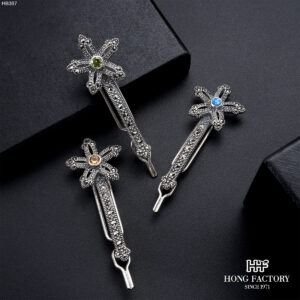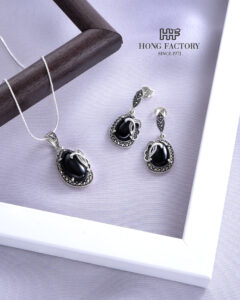When shopping for jewelry, you may have come across the terms “hard jewelry” and “soft jewelry.” Understanding these categories helps you choose pieces that match your lifestyle, preferences, and long-term needs. Let’s break down what makes jewelry “hard” or “soft” and how to choose between them. Marcasite stone

What is Hard Jewelry?
Hard jewelry refers to pieces made with durable materials and solid construction. These items are designed to withstand everyday wear and maintain their shape over time.
Characteristics of Hard Jewelry
- Strong Materials: Often made from metals like platinum, tungsten, stainless steel, and high-karat gold.
- Lasting Durability: Less prone to bending, scratching, or breaking.
- Solid Structure: Typically includes hard gemstones like diamonds, sapphires, or rubies.
Examples of Hard Jewelry
- Diamond engagement rings
- Platinum wedding bands
- Tungsten men’s bracelets
- Hard gemstone earrings
What is Soft Jewelry?
Soft jewelry features more delicate materials, flexible designs, or lightweight components. These pieces may require more care but offer unique textures and artistic detail.
Characteristics of Soft Jewelry
- Flexible or Delicate Materials: Can include silver, copper, textile elements, and leather.
- Intricate Designs: Often handmade or crafted for artistic appeal.
- Greater Variety: May incorporate beads, enamel, or organic shapes.
Examples of Soft Jewelry
- Silver bangles with detailed etching
- Beaded bracelets
- Fabric or thread-woven necklaces
- Leather wrap cuffs
How to Choose Between Hard and Soft Jewelry
Based on Lifestyle
- Active Lifestyle: Choose hard jewelry that resists damage during workouts or busy routines.
- Casual or Artistic Style: Soft jewelry can enhance a relaxed or boho-inspired look.
Based on Occasion
- Formal Events: Hard jewelry like diamond or gemstone pieces elevate your elegance.
- Everyday Wear: Soft jewelry adds comfort and versatility to daily outfits.
Based on Maintenance
- Low Maintenance: Hard jewelry requires less frequent care.
- High Maintenance: Soft jewelry may tarnish faster and need gentler handling.
Combining Both Styles
You don’t have to choose one over the other. Many people mix hard and soft jewelry for texture and contrast. For example, pair a hard silver cuff with a soft beaded bracelet for a balanced look.
Understanding the difference between hard and soft jewelry allows you to build a well-rounded collection that suits all occasions. While hard jewelry offers durability and brilliance, soft jewelry brings in creativity and comfort. Explore both styles and let your jewelry express all facets of your personality.


